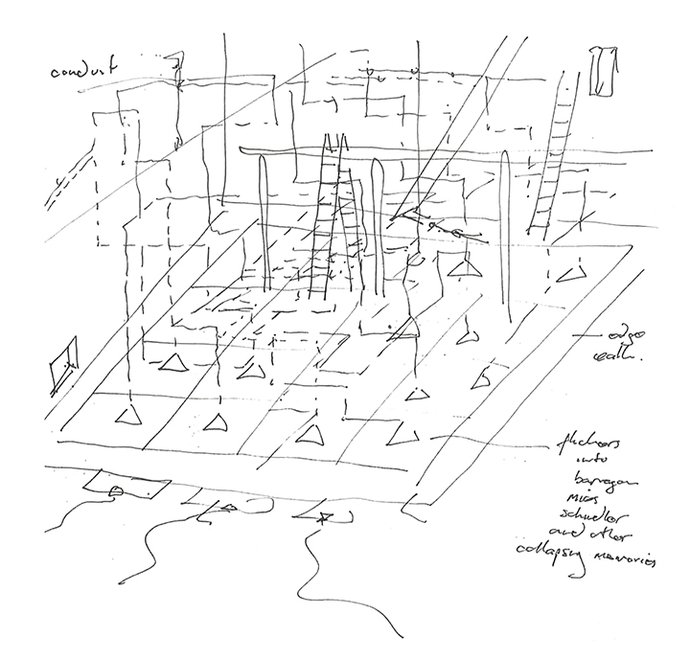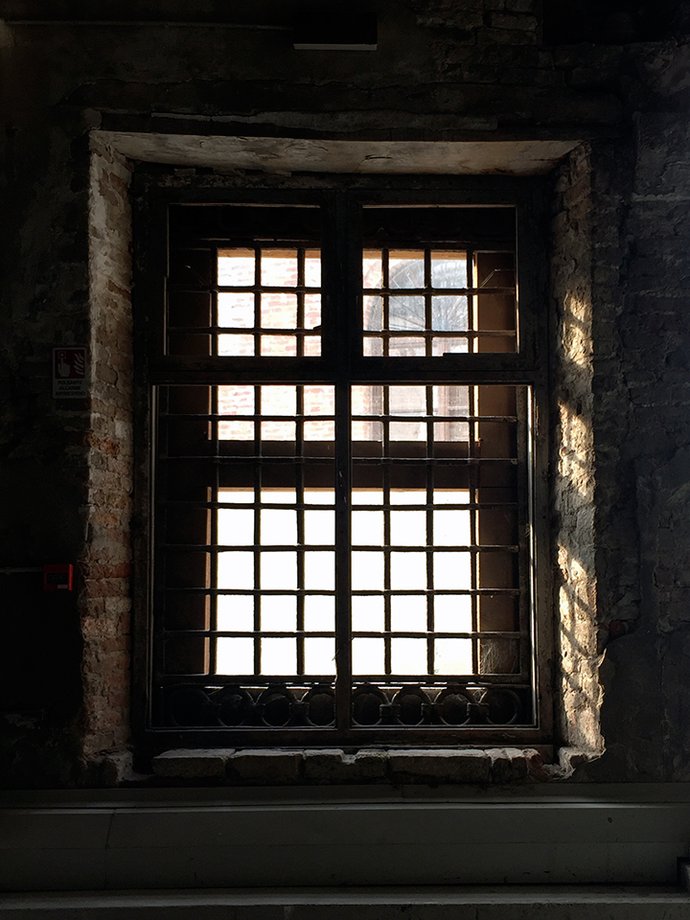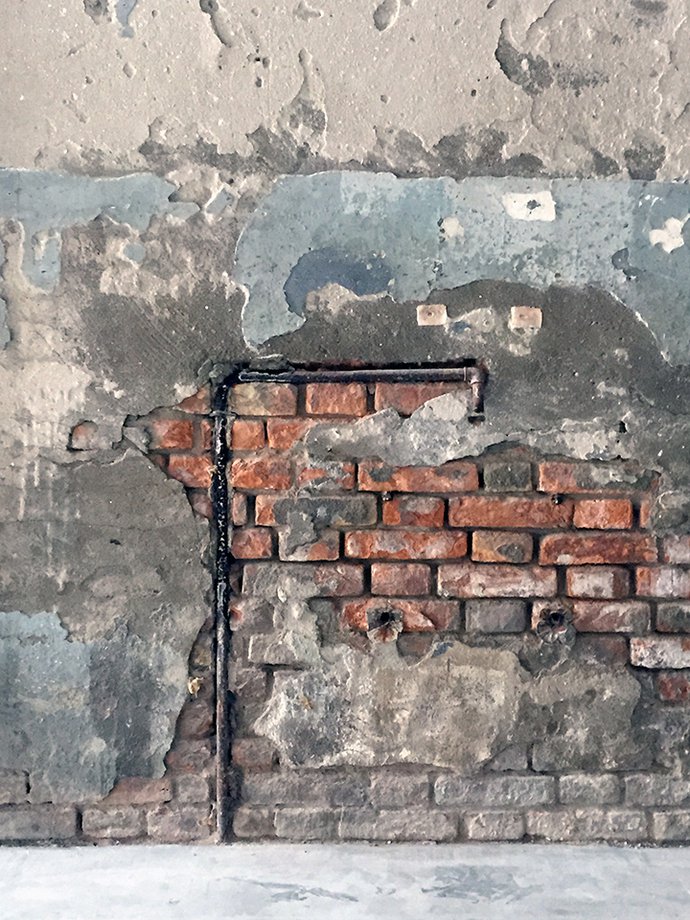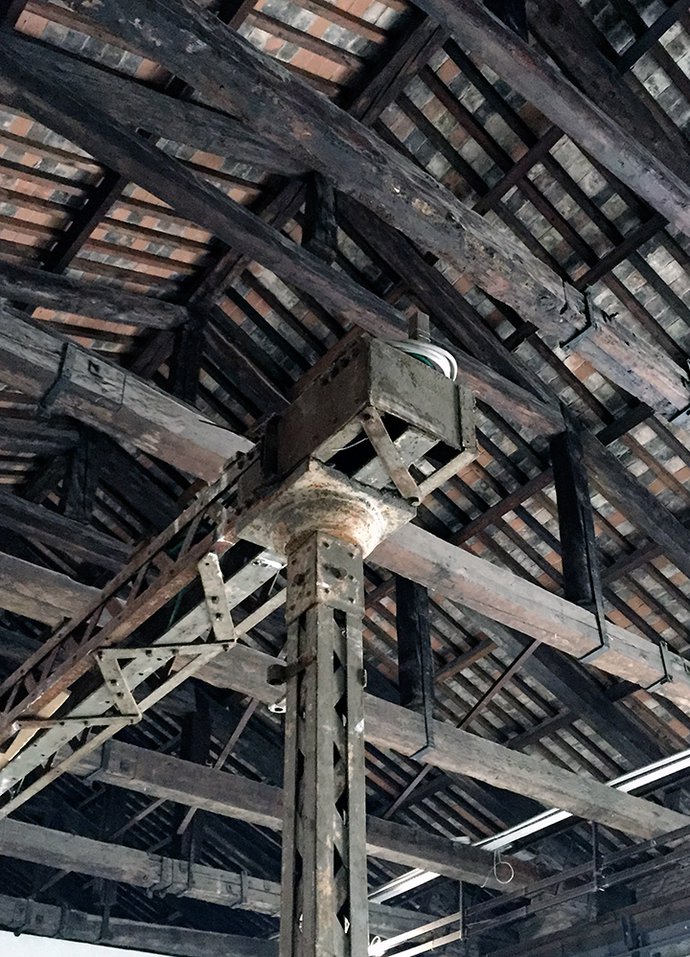Learning from Venice Entry 03
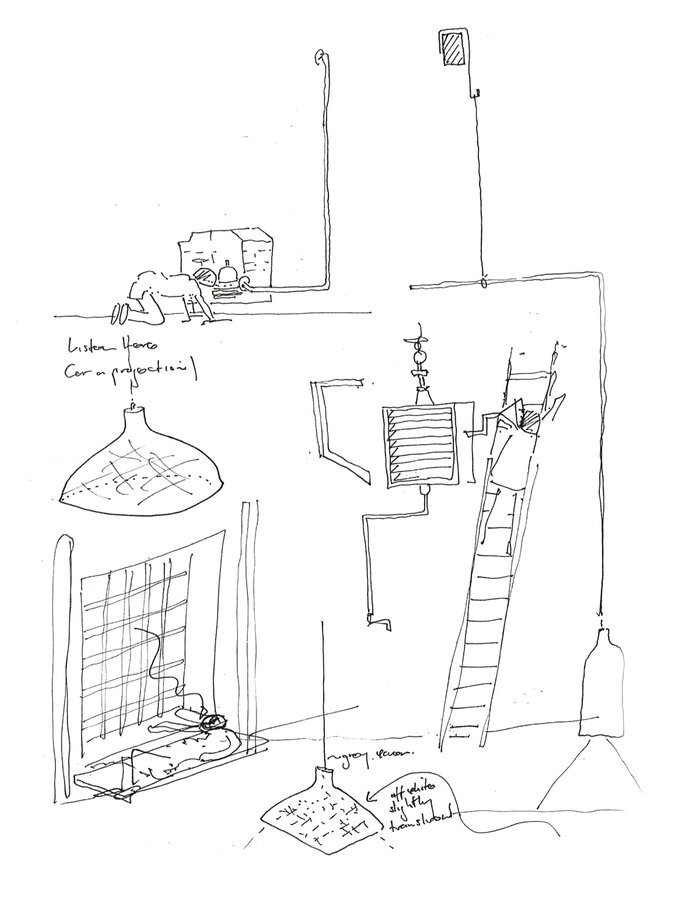
We walked the length of the cavernous Arsenale shed and tried to imagine what it would be like to come upon our space at the end of the long journey through the exhibition. We sat on the floor and decided immediately that installing some seating would be a good idea, as visitors would be tired by the end of this long procession.
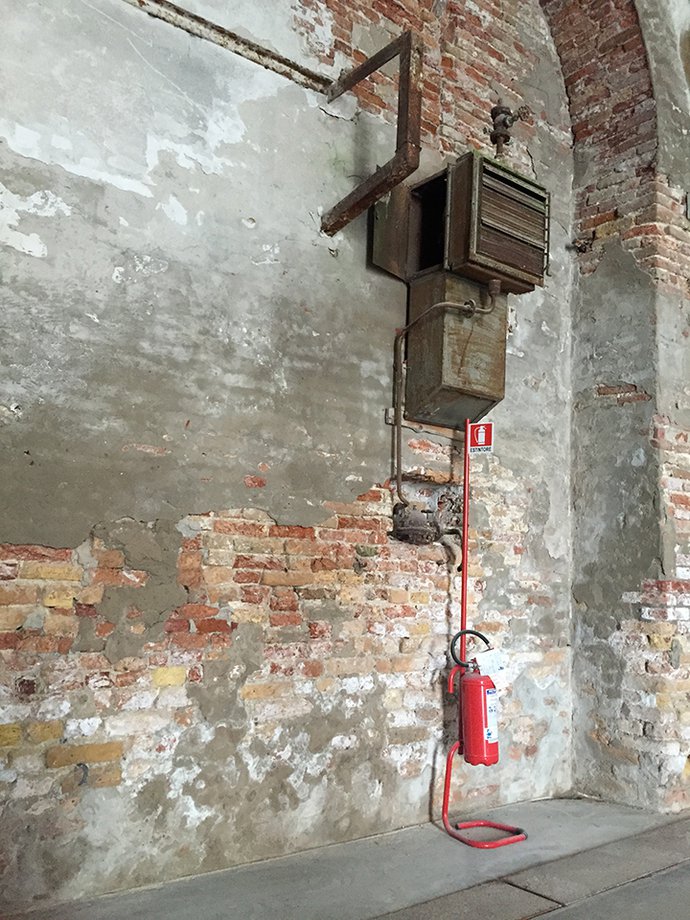
We began by carefully photographing the details of the room. The walls were peppered with truncated pipes, conduits and cables. These didn't seem similar enough to belong to one, or even a few, activities. Instead, they pointed to an accretion of multiple uses over time; each abandoned in favour of the next. They brought to mind the Paul Klee drawings that we had been looking at in relation to this project: an almost pointless network of signals, trajectories and intentions that nearly added up to something legible, but not quite. We contentedly snapped away; recording fire extinguishers, valves and abandoned fan units. The plain tiled roof above the heavy rafters had been repaired a hundred times and each new tile had a different patina. It reminded us of old books on library shelves. The window reveals were deep and filled with multiple unglazed frames and metal grilles.
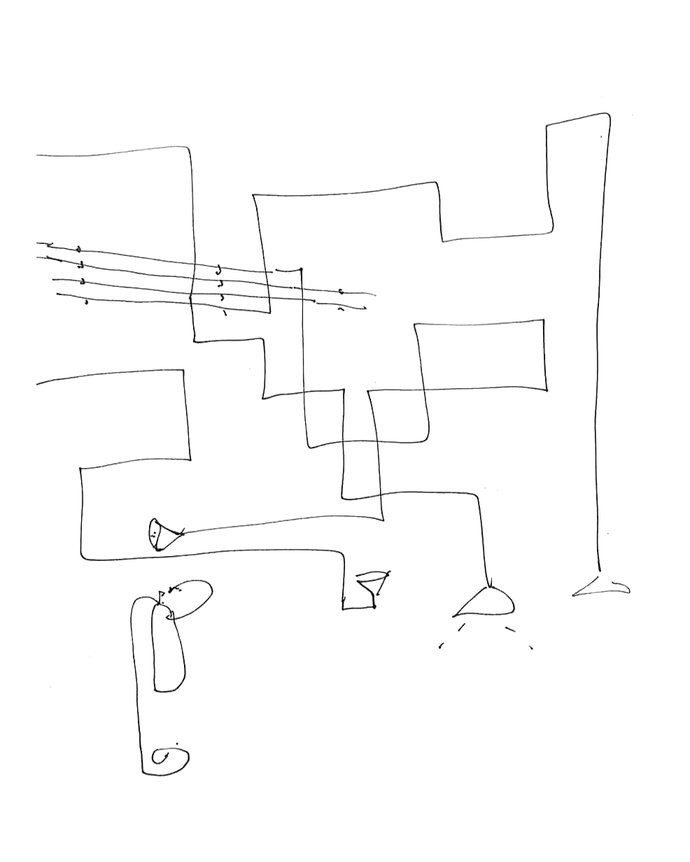
We sketched two ideas: a central rain of cables falling from the high beams and trusses, terminating just above the floor in an array of projectors and speakers; and an episodic, piecemeal collection of ladders and stands up against the walls allowing visitors to clamber up to inspect the abandoned relics of previous industrial activities. We deliberately tried to invoke Klee drawings such as Seiltänzer. In them, he seemed to ably embody the predicament of the individual person navigating space. We discussed the possibility of three-dimensional spatial construction, a rambling wall piece and a drawing on the floor. It seemed like the entire site was empty. We saw no one.
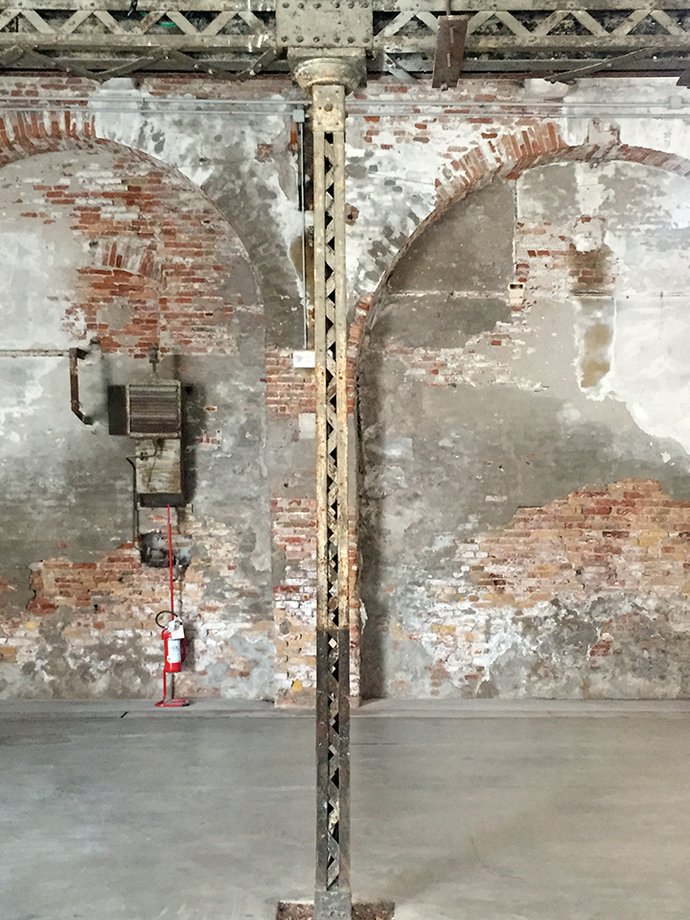
We questioned whether it would be possible to say anything truthful or relevant about the predicament of people with dementia using an architectural drawing or construction. The desire to make something powerfully immersive in the grand hall of the Arsenale seemed almost at odds with the intimate experiences of the individual soul undergoing the destruction of their own identity. How do you design to create a sense of situation and reliable navigation for people who are losing their ability to remember, plan and place themselves in the world? The key to our collaboration would be the adaptation of architectural representational techniques in order to show an altered world in which the stability of place is vanishing.
